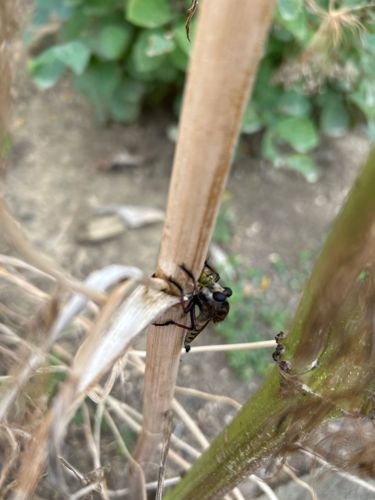Robber Fly
Scientific Name: Asilidae (Family)
Order & Family: Order: Diptera, Family: Asilidae
Size: Typically range from 0.4 to 1.2 inches (1 to 3 cm) in length, though some species can be as small as 0.2 inches (0.5 cm) or as large as 2 inches (5 cm).

Natural Habitat
Found in a diverse range of habitats including grasslands, forests, deserts, agricultural fields, and suburban gardens. They prefer open, sunny areas with good perching opportunities to hunt.
Diet & Feeding
Strictly carnivorous, feeding on a wide variety of other insects, including flies, bees, wasps, grasshoppers, butterflies, and even other robber flies. Some larger species can prey on small vertebrates, although this is rare.
Behavior Patterns
Robber flies are ambush predators, often perching on elevated spots like stems or leaves to scan for prey. Once prey is spotted, they launch a swift attack, capturing insects mid-air or off surfaces. They inject digestive enzymes to liquefy the prey's internal tissues before sucking them dry. Mating usually occurs in mid-air or on vegetation. Females lay eggs in soil, rotting wood, or on plants.
Risks & Benefits
Benefits: Robber flies are valuable biological control agents, preying on many insect pests that can damage crops or nuisance insects. Risks: They can deliver a painful bite if handled, especially larger species, but they are not venomous in a way that causes significant harm to humans beyond the localized pain. They do not sting.
Identified on: 8/28/2025